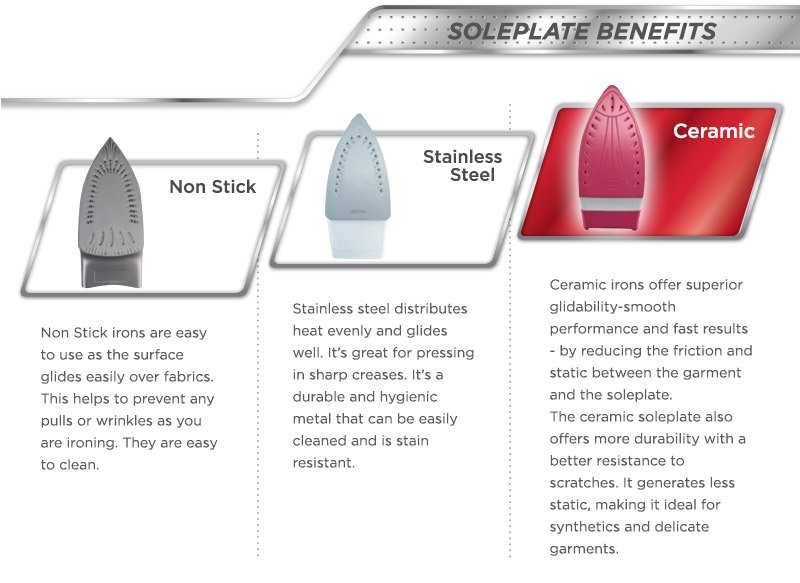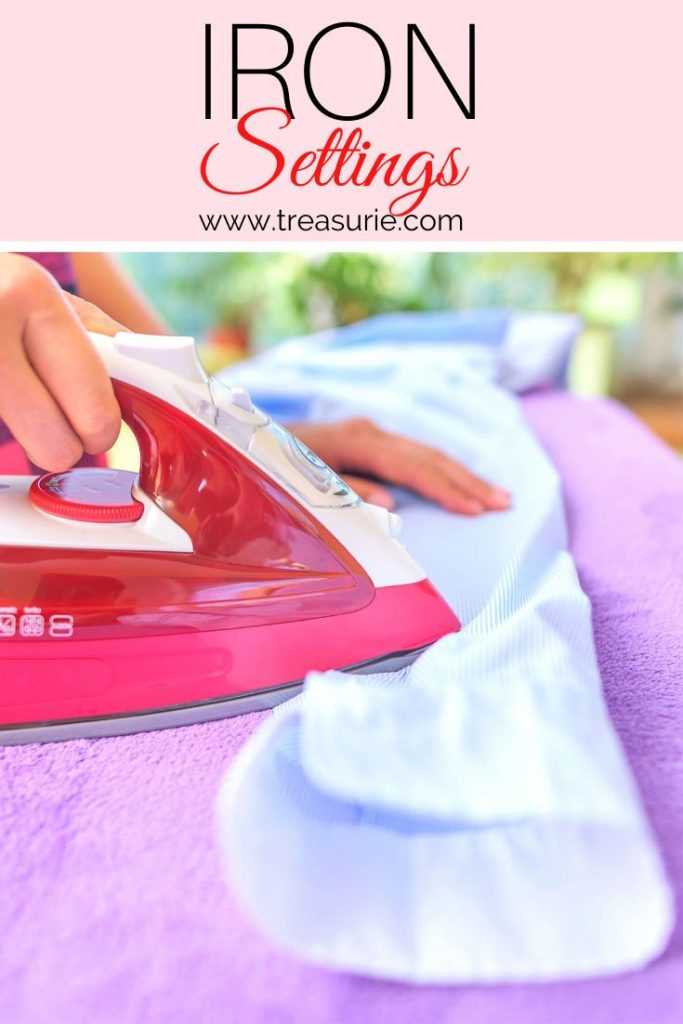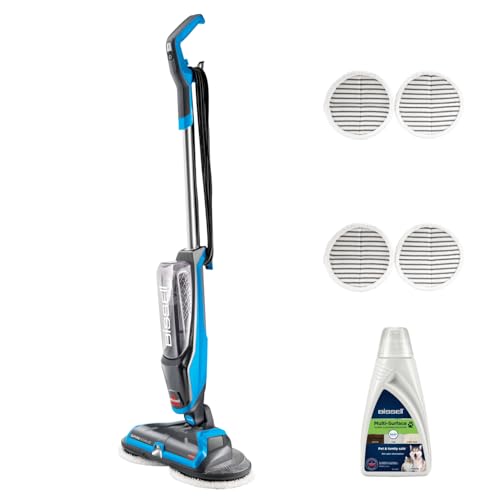


Ironing is a common household chore that most of us have to deal with regularly. Whether you’re tackling a stack of laundry or preparing a shirt for a special occasion, knowing how to properly set the iron’s temperature is essential for achieving the best results. In this comprehensive guide, we’ll delve into the different iron settings and temperatures, giving you the knowledge you need to iron like a pro.
Why are iron settings important?
Iron settings determine the amount of heat that is applied to the fabric. Different fabrics require different levels of heat to be properly ironed without causing damage. Setting the iron to the wrong temperature can result in scorching or melting delicate fabrics, while setting it too low may not be effective in removing wrinkles from tougher fabrics. Understanding the appropriate iron settings for each fabric type is crucial for ensuring the longevity and appearance of your clothing.
How to choose the right iron setting?
Start by checking the care instructions on the clothing label. Most fabric labels will provide temperature recommendations, such as “low heat,” “medium heat,” or “high heat.” In the absence of specific instructions, you can use the following guidelines as a starting point:
Top RatedCHI Steam Iron with Ceramic SoleplatePowerful steam action with 300 holesThe CHI Lava Iron delivers exceptional heat and steam performance thanks to its ceramic soleplate infused with volcanic lava. Enjoy comfortable ironing with a long cord and precise temperature controls.
– Low heat (around 250°F or 120°C) is suitable for delicate fabrics like silk and synthetics.
– Medium heat (around 300°F or 150°C) works well for most cotton and linen materials.
– High heat (around 400°F or 200°C) is necessary for heavy fabrics like denim and thick cotton.
By taking the time to understand iron settings and temperatures, you’ll be able to confidently tackle any ironing task that comes your way. With the right setting, your clothes will look sharp and wrinkle-free, helping you to always make a stylish impression.
Iron Settings and Temperatures: A Comprehensive Guide
Introduction
Ironing clothes is an essential part of maintaining a neat and professional appearance. However, achieving the perfect ironing results can be challenging if you are unsure about the correct iron settings and temperatures to use. This comprehensive guide will walk you through the different types of fabric, iron settings, and temperatures to help you achieve wrinkle-free clothes every time.
Fabric Types
Before setting your iron, it is crucial to identify the fabric type of the garment you are about to iron. Different fabrics require different iron settings to avoid damage. Here are some common fabric types and their corresponding iron settings:
- Cotton: Set the iron to the highest temperature setting (usually indicated as “cotton” on the iron) as cotton fabric can withstand high heat.
- Silk: Use a low heat setting for silk fabric. Avoid using steam and be gentle while ironing.
- Wool: Set the iron to a medium temperature setting for wool. It is best to use a steam iron and cover the garment with a cloth while ironing to protect the fabric.
- Polyester: Use a low to medium heat setting for polyester fabric. Avoid direct contact with the iron, and instead, place a cloth over the garment.
- Denim: Set the iron to a high temperature setting for denim fabric. It is also recommended to use steam to achieve the best results.
Iron Settings
Modern irons have multiple settings that can be adjusted based on your specific needs. Here are some common iron settings and their purposes:
- Temperature Control: This setting allows you to adjust the heat level of the iron. Refer to the fabric type section to determine the appropriate temperature setting for the garment.
- Steam Control: The steam control setting regulates the amount of steam released while ironing. Use a higher steam setting for thicker fabrics and a lower setting for delicate fabrics.
- Auto Shut-Off: Some irons come with an auto shut-off feature that automatically turns off the iron when it is left idle for a certain period. This feature helps prevent accidents and saves energy.
Ironing Techniques
Having the right iron settings is essential, but using the correct ironing techniques can further enhance your results. Here are some general ironing techniques to keep in mind:
- Start with a Clean Iron: Make sure your iron is clean before use. Remove any built-up residue or debris.
- Iron Inside Out: When ironing delicate fabrics or garments with prints, iron them inside out to prevent any damage.
- Iron in One Direction: Iron in long, straight strokes rather than back and forth to prevent wrinkling.
- Use a Pressing Cloth: Place a pressing cloth over delicate fabrics to protect them from direct heat.
- Hang Properly: Hang the ironed garments immediately after ironing to prevent new wrinkles from forming.
Conclusion
By understanding the appropriate iron settings and temperatures for different fabrics, you can achieve professional ironing results while protecting your garments. Remember to always check the fabric label for any specific instructions, and practice proper ironing techniques to maintain your clothes’ quality and appearance.
Importance of Understanding Iron Settings
Ironing clothing is a common household chore that many people engage in regularly. Proper iron settings and temperatures are crucial for achieving the desired results and preventing damage to the fabric. Understanding the different iron settings and their functions is essential for efficiently and safely ironing various types of clothing.
1. Avoiding Damage to Fabrics
One of the main reasons why understanding iron settings is important is to avoid damaging fabrics. Different fabrics have different heat tolerance levels and require different ironing temperatures. Using the wrong setting can lead to burning or scorching the fabric, resulting in permanent damage. For example, delicate fabrics such as silk or chiffon require lower heat settings, while sturdy fabrics like denim or cotton can tolerate higher temperatures.
2. Achieving Desired Results
Additionally, understanding iron settings enables one to achieve the desired results when ironing clothes. Some fabrics may require a certain level of heat to remove wrinkles effectively, while others may require steam. By understanding the various settings, such as temperature controls, fabric selection, and steam options, individuals can customize their ironing process to suit different fabrics and clothing types. This ensures that clothes come out looking smooth, crisp, and wrinkle-free.
3. Preventing Accidents
Knowing how to properly use iron settings can also help prevent accidents and injuries while ironing. Irons can reach high temperatures, and if mishandled, they can cause burns or fire hazards. Understanding the different settings and how to use them correctly can help individuals iron safely, minimizing the risk of accidents and injuries. This includes knowing how to properly set the iron’s temperature, how to turn it off when not in use, and how to handle it safely.
Conclusion
Understanding iron settings and temperatures is crucial for effective and safe ironing. It helps avoid damaging fabrics, achieve desired results, and prevent accidents. By taking the time to learn and understand the various iron settings, individuals can ensure that their clothing remains in good condition and that ironing is an efficient and hassle-free process.
Types of Iron Settings
Iron settings refer to the various heat and steam options that can be adjusted on an iron to achieve different results when ironing clothes. These settings typically include temperature controls and steam settings.
Temperature Controls
The temperature control on an iron allows you to adjust the heat level based on the fabric type you are ironing. Different fabrics require different heat settings to prevent damage. Here are some common temperature settings found on irons:
- Cotton: This setting is for thick and sturdy fabrics like cotton shirts and jeans. It provides a high level of heat to remove wrinkles effectively.
- Wool: The wool setting is designed for delicate wool fabrics. It provides a moderate level of heat to smooth out wrinkles without causing damage.
- Silk: The silk setting is ideal for silk and other delicate fabrics. It provides a low level of heat to prevent burning or damaging the fabric.
- Linen: Linen setting is for sturdy fabrics like linen. It delivers a high level of heat to effectively remove wrinkles from this type of fabric.
- Synthetic: Synthetic fabrics such as polyester and nylon typically require a low to medium level of heat. The synthetic setting helps prevent damage to these fabrics.
Steam Settings
The steam settings on an iron control the amount of steam that is released during ironing. Steam can help remove stubborn wrinkles and provide better results. Here are some common steam settings:
- No Steam: This setting turns off the steam function completely. It is suitable for dry ironing or fabrics that cannot tolerate steam.
- Low Steam: The low steam setting releases a small amount of steam. It is ideal for delicate fabrics or items with light wrinkles.
- Medium Steam: Medium steam setting releases a moderate amount of steam. It is suitable for most fabrics and can effectively remove wrinkles.
- High Steam: High steam setting releases a large amount of steam. It is best for heavy fabrics or stubborn wrinkles that are difficult to remove.
It is important to read the care labels on your clothes to determine the appropriate temperature and steam settings for ironing. Adjusting these settings correctly will help ensure that your clothes are ironed safely and effectively.
Choosing the Right Temperature
When using an iron, it is crucial to choose the right temperature setting to ensure the best results. Different fabrics require different levels of heat to be effectively pressed without causing damage. Here are some guidelines to help you choose the right temperature:
Fabric Types
Start by knowing the fabric type you are working with. Each fabric has its own recommended temperature range.
- Cotton: Generally, cotton can withstand higher temperatures, so it is safe to set the iron between 350°F and 400°F (175°C to 205°C).
- Wool: Wool is a more delicate fabric that should be ironed at lower temperatures, around 300°F (150°C).
- Silk: Silk is a delicate fabric that requires a lower temperature. Set your iron at around 250°F (120°C) for silk garments.
- Polyester: Polyester can be ironed at moderate temperatures, usually around 300°F (150°C).
- Linen: Linen is a sturdy fabric that can tolerate higher temperatures. Set your iron between 350°F and 400°F (175°C to 205°C) when working with linen.
Label Instructions
Always check the care label on your garment for any specific ironing instructions. The label may provide temperature recommendations and additional instructions for ironing. Following the label instructions is essential to avoid damaging the fabric.
Test a Small Area

If you are uncertain about the appropriate temperature for a particular fabric, it is always a good idea to test a small, inconspicuous area first. Choose an area that is not visible when the garment is worn, such as an inside seam or hem, and iron it carefully at a lower temperature. Observe the fabric’s reaction to the heat and adjust the temperature accordingly.
Temperature Adjustment
Most irons come with temperature adjustment settings. If you need to change the temperature while ironing, always turn the iron off or unplug it before adjusting the temperature. Allow the iron to cool down slightly before selecting a new temperature setting to avoid burning yourself.
Ironing Techniques
In addition to choosing the right temperature, it is essential to use proper ironing techniques to achieve the best results. Always iron in straight, smooth motions, without applying excessive pressure. Ensure that the iron is moving constantly to prevent scorching the fabric.
Remember, using the right temperature and employing correct ironing techniques will help to achieve wrinkle-free, well-pressed garments without causing any damage to the fabric.
Safety Measures while Using Iron

1. Read the instruction manual
Before using the iron, it is important to read the instruction manual provided by the manufacturer. The manual contains important safety guidelines and usage instructions that can help prevent accidents and ensure the proper functioning of the iron.
2. Choose a suitable ironing surface
When using an iron, it is important to choose a suitable ironing surface. Avoid using surfaces that are flammable or heat-sensitive as this can pose a fire hazard or damage the surface. An ideal ironing surface is sturdy, heat-resistant, and has sufficient space for the ironing task.
3. Keep the iron away from children and pets
Ironing appliances can reach high temperatures and pose a burn risk to children and pets. It is crucial to keep the iron out of the reach of children and to ensure pets are not near the ironing area. Always unplug the iron and allow it to cool down before storing it out of reach.
4. Never leave the iron unattended
Leaving the iron unattended can be dangerous and can lead to accidents such as fires or burns. Always turn off the iron, unplug it from the power source, and wait for it to cool down before leaving the ironing area. Additionally, ensure the ironing board is stable and secure to prevent accidents.
5. Use protective equipment
When ironing, it is recommended to use protective equipment to prevent accidents and injuries. This includes using a heat-resistant ironing mat to protect the ironing surface, wearing heat-resistant gloves to protect hands from burns, and using an iron rest to safely place the iron when not in use.
6. Handle the iron with care

When using an iron, handle it with care to prevent accidents. Do not yank the cord, as this can damage the cord or cause the iron to fall. Avoid touching the hot soleplate of the iron with bare hands, and always hold the iron by the handle. Never pull or tug on the cord while the iron is plugged in.
7. Store the iron safely
After use, it is important to store the iron safely to avoid accidents and damage. Allow the iron to cool down completely before storing it in a safe and dry place. Make sure the cord is neatly wrapped and secured. Keep the iron out of reach of children and pets to prevent accidents.
8. Check the cord and plug
Prior to each use, inspect the cord and plug of the iron for any signs of damage. A frayed or damaged cord can be a safety hazard and should be replaced. If the plug has any loose connections, it should be repaired or replaced. Do not attempt to use a damaged iron.
9. Clean the iron regularly
Regular cleaning of the iron helps maintain its performance and safety. Follow the manufacturer’s instructions for cleaning the iron. Ensure the iron is unplugged and cooled down before cleaning. Removing any residue, such as burnt fabrics or mineral deposits, can prevent stains, improve steam performance, and enhance safety.
10. Avoid overloading electrical outlets
When using an iron, avoid overloading electrical outlets. Plugging in multiple high-powered appliances into a single outlet can cause electrical issues, including short circuits or fires. Always use a dedicated outlet for the iron and ensure the electrical circuit can handle the appliance’s power requirements.
| Safety Measures |
|---|
| Read the instruction manual |
| Choose a suitable ironing surface |
| Keep the iron away from children and pets |
| Never leave the iron unattended |
| Use protective equipment |
| Handle the iron with care |
| Store the iron safely |
| Check the cord and plug |
| Clean the iron regularly |
| Avoid overloading electrical outlets |
Maintenance and Care for your Iron
Cleaning your Iron
Cleaning your iron regularly is important to ensure its optimal performance and longevity. Here are some steps you can follow to clean your iron:
- Make sure your iron is unplugged and completely cooled down before cleaning.
- Remove any residual water from the water reservoir.
- Mix a solution of equal parts water and vinegar.
- Dip a clean cloth or sponge into the solution and gently scrub the plate of the iron.
- Pay extra attention to any stubborn stains or build-up.
- Wipe the plate with a clean cloth or sponge dampened with plain water to remove any vinegar residue.
- Finally, let the iron dry completely before storing it.
Preventing Mineral Build-up
Mineral build-up can cause clogs and affect the performance of your iron. To prevent mineral build-up, you can take the following steps:
- Use distilled or demineralized water instead of tap water, especially if you live in an area with hard water.
- Empty the water reservoir after each use to prevent water from sitting and evaporating, leaving behind mineral deposits.
- Consider using a descaling solution periodically to remove any mineral build-up.
Storage
Proper storage is essential to keep your iron in good condition. Here are some tips for storing your iron:
- Make sure the iron is completely cooled down before storing.
- Wrap the cord loosely around the iron to avoid damage.
- Store the iron in an upright position to prevent any water leakage.
Regular Check-ups and Repairs
It’s a good idea to have your iron checked by a professional regularly, especially if you notice any performance issues or damage. A professional can identify any underlying problems and provide necessary repairs to keep your iron functioning optimally.
Caution and Safety
Always exercise caution when using and maintaining your iron, and follow these safety guidelines:
- Ensure the iron is unplugged and cool before cleaning or performing any maintenance.
- Avoid using abrasive cleaners or tools that can scratch or damage the plate.
- Keep the iron out of reach of children and pets.
- Do not leave the iron unattended when it is plugged in.
- Store the iron in a safe and dry place to avoid any accidents.
By following these maintenance and care tips, you can extend the lifespan of your iron and ensure it continues to deliver effective and efficient ironing results.
FAQ
What is the purpose of iron settings and temperatures?
The purpose of iron settings and temperatures is to allow you to adjust the heat level of your iron for different types of fabrics. Different fabrics require different heat levels to avoid damage or achieve the desired result.
How do I know which iron setting to use?
There are typically labels on clothing items indicating the appropriate iron setting to use. If there is no label, you can do a heat test on a small inconspicuous area of the fabric. Start with a low heat setting and gradually increase until you find the right temperature.
What happens if I use the wrong iron setting?
If you use a higher temperature than recommended, you may scorch or burn the fabric. If you use a lower temperature, you may not be able to remove wrinkles effectively. It’s important to use the correct iron setting to avoid damaging your clothes.
Can I use the same iron setting for all fabrics?
No, you cannot use the same iron setting for all fabrics. Different fabrics require different heat levels. Delicate fabrics like silk or chiffon require lower heat settings, while sturdy fabrics like cotton or denim can withstand higher heat settings.












